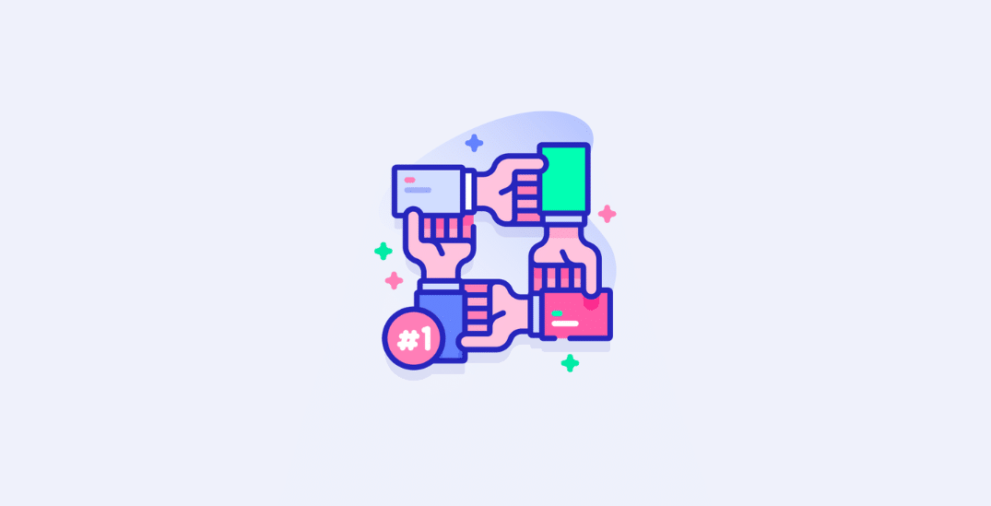10 Of The Best SaaS Help Desk Solutions
In business, staying on top of customer queries and issues is like keeping a garden. You need the right tools…

So, you’re thinking about downloading WordPress for the first time in 2025? That’s amazing! Whether you’re new to WordPress to start a blog, an online store, or a portfolio, you’re about to step into one of the most powerful website-building platforms out there. But let’s be real—getting started can feel a little overwhelming.
You might be asking yourself:
Take a deep breath—we’ve got you! This guide will break it all down into simple steps, helping you go from “I have no idea what I’m doing” to “Wow, I just launched my own website!” Let’s get started.

WordPress is an open-source content management system (CMS), which is just a fancy way of saying, “It helps you build and manage a website without needing to code.” In fact, over 40% of all websites on the internet run on WordPress! That’s a huge testament to how powerful and flexible it is.
Here’s why people love it:
✅ It’s free! (At least, the software itself is.)
✅ It’s customizable with thousands of themes and plugins.
✅ It’s beginner-friendly—no coding required.
✅ It’s great for SEO, helping your website rank on Google.
And guess what? If you can navigate a simple dashboard, click a few buttons, and follow some instructions, you can use WordPress. Now, let’s talk about downloading it.
This is where many beginners get confused. There are two versions of WordPress:
If you’re serious about building a website, go with WordPress.org. It’s slightly more setup work but totally worth it.
Before jumping in, let’s get you prepared. Here’s what you need:
Your domain name is your website’s address (like www.MyAwesomeSite.com). Many hosting providers offer a free domain for the first year.
Hosting is where your website lives online. Some beginner-friendly options include:
This keeps your site secure (you’ll see a padlock in the browser bar). Most hosting providers offer this for free.
Once you have these, you’re ready to download WordPress!
Head over to WordPress.org and click on the “Get WordPress” button. This will download the latest version of WordPress as a ZIP file.
Once you have the ZIP file, you’ll need to upload it to your hosting account. Most hosting providers have an easy 1-click installation process (check their tutorials!). If you’re doing it manually:
WordPress needs a database to store all your website content. In your hosting dashboard:
Now, open your web browser and type your domain name. You’ll see the WordPress setup wizard. Then follow these steps:
Boom! Your site is live!
It’s completely normal to feel a bit lost at first. But remember:
Just take it step by step—you’ve got this!
Now that WordPress is installed, it’s time for the fun part: customizing your site!
A theme is the foundation of your website’s appearance, structure, and user experience. It dictates everything from the layout and typography to the colors and functionality, shaping how visitors perceive and navigate your site. A well-designed theme ensures that your content is visually appealing, easy to read, and mobile-friendly. A poorly chosen one can make your site feel cluttered, slow, or outdated.
Beyond aesthetics, themes also impact performance, SEO, and customization options, influencing how efficiently your website loads and ranks in search engines. Whether you’re creating a blog, an eCommerce store, or a portfolio, selecting the right theme is crucial to making a strong first impression and keeping visitors engaged.
Need a professional, stylish WordPress theme design? We offer some of the best magazine WordPress themes for bloggers, news sites, and online magazines. Be sure to check them out!
Plugins are the secret weapon that turns a basic WordPress site into a powerful, feature-rich website tailored to your needs. As a new WordPress user, plugins allow you to easily add functionality without touching a single line of code—whether it’s improving SEO, enhancing security, speeding up your site, or creating stunning page layouts.
If you’ll need to install a few of these, then here are some must-haves:
A new WordPress website user should start creating and publishing content as soon as possible because the sooner they begin, the faster they gain confidence, improve their skills, and establish an online presence. WordPress thrives on fresh content, and search engines reward active websites with better visibility. Publishing early helps users learn by doing—experimenting with formatting, media, and plugins in real-time—without the fear of making mistakes. Plus, an active site engages visitors, builds credibility, and encourages return traffic.
Instead of waiting for perfection, new users should embrace progress, knowing they can refine and optimize their content along the way. Besides you can use your WordPress dashboard to help you familiarize yourself with the platform in the process. Write your first blog post, upload images, and make your website uniquely yours!
Downloading WordPress for the first time in 2025 might have seemed intimidating at first, but now you’re equipped with everything you need to get started. With a little patience and creativity, you’ll have a fully functioning website in no time. And if you’re looking for a stunning, responsive theme, don’t forget to explore our collection of high-quality WordPress magazine themes that make your site stand out.

In business, staying on top of customer queries and issues is like keeping a garden. You need the right tools…

When starting with DIY web design, beginners often struggle with selecting the right tools, layouts, and features that make a…

Have you ever felt like your team could achieve so much more if everyone only worked a little bit smarter,…

Have you ever wondered why some businesses seem to have many customers who keep returning, while others struggle to keep…